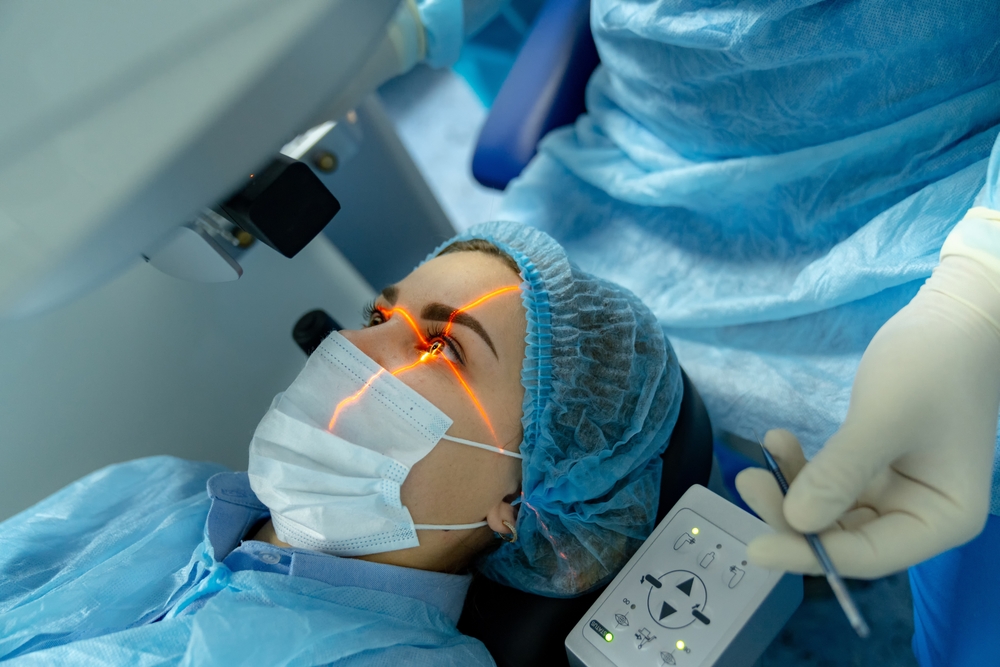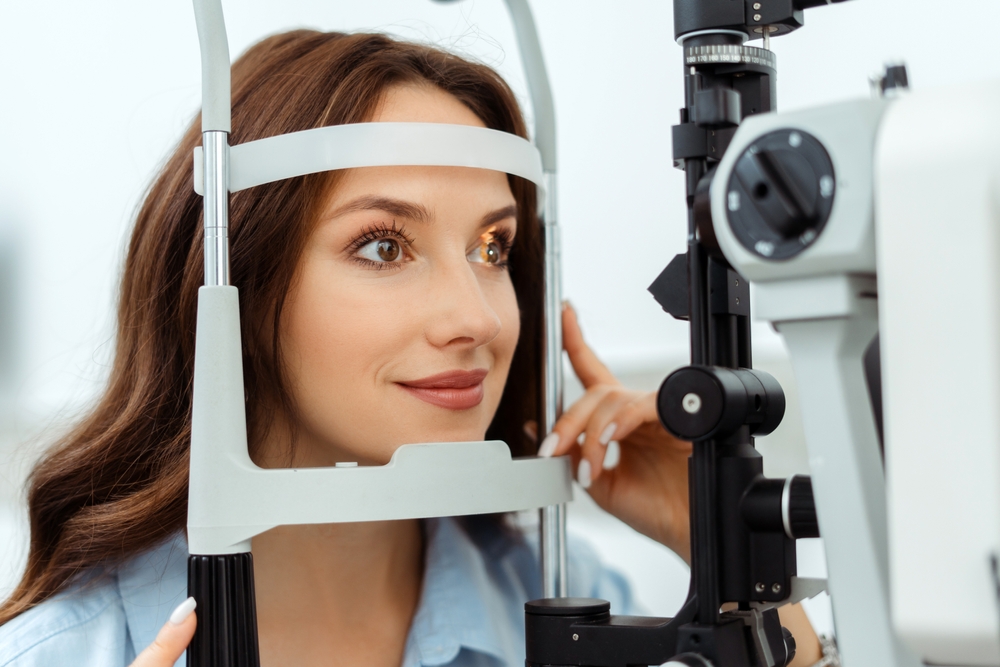Glasses and contact lenses correct refractive errors, which enables you to see clearly. But they can be a hassle.
With SMILE, you can enjoy greater freedom from prescription lenses. The revolutionary laser vision correction procedure treats common refractive errors, allowing you to step into a world of crystal-clear vision.
Keep reading to learn more about SMILE and whether you’re a good candidate for the procedure!
What is SMILE Eye Surgery?
Small Incision Lenticule Extraction (SMILE) is a laser vision correction procedure that corrects refractive errors, including nearsightedness and astigmatism. Your vision relies on your cornea and lens to refract or bend light correctly so that it lands directly on the retina.

When you have a refractive error, the shape of your lens or cornea prevents light from bending properly, resulting in blurred images. SMILE eye surgery reshapes your cornea, improving how light refracts.
By altering the curvature of the cornea, SMILE gives you sharper vision, eliminating or significantly reducing the need for glasses or contact lenses. SMILE is performed using a femtosecond laser.
The femto laser system utilizes advanced technology to deliver exceptional cutting precision and speed, enhancing the visual outcome of SMILE.
What to Expect During SMILE
SMILE is an outpatient procedure, meaning you will be able to go home after. Your SMILE surgeon will administer eye drops to numb your eyes, ensuring the procedure is completely painless.
You may also be given a sedative to help you remain relaxed throughout the procedure. Your SMILE surgeon will use a femtosecond laser to cut a thin contact lens-shaped piece called a lenticule in the middle layer of your cornea or stroma.
The laser is pre-programmed with specific measurements for your eyes. Next, the lenticule is removed through a small incision less than four millimeters long.
Removing the lenticule changes the shape of your cornea to correct your refractive error and improve vision. The outpatient procedure takes around twenty minutes for both eyes.
What is Recovery like after SMILE?
Your vision might be blurry right after SMILE, and the sedative can take some time to wear off. Thus, arrange for someone to drive you home after your procedure.
The recovery for SMILE is relatively quick. Most people are able to get back most of their normal routine within a day or two.
Your vision will gradually improve as you heal over the next couple of days and weeks. Following your eye doctor’s post-surgery care instructions is essential to a speedy recovery.
They’ll include:

Relaxing Once You Get Home
Take a nap and give yourself some downtime for the rest of the day while avoiding activities like watching TV, reading, and using your computer.
Applying anti-inflammatory and antibiotic eye drops exactly as prescribed.
Keeping Water Out of Your Eyes
You’ll want to avoid getting water in your eyes for about a week after the procedure. This will help avoid any complications or infections.
Attending Your Follow-Up Appointments
You will need to visit your eye doctor for a few follow-up appointments to ensure your eyes are healing properly. It is very important to make it to these appointments.
Wearing Your Eye Sheild
Wearing your protective eye shield while sleeping and napping for the first three nights after SMILE.
What Are the Benefits of SMILE?
When weighing your refractive surgery options, it’s important to consider the benefits of each procedure. SMILE has many advantages, such as:
Less Dry Eye

SMILE surgery involves a unique approach that minimizes the risk of dry eye compared to LASIK. In LASIK, the surgeon creates a flap in the cornea to access and reshape the underlying stroma, which can disrupt the corneal nerves responsible for maintaining a healthy tear film.
In contrast, SMILE uses a femtosecond laser to create a small lenticule within the cornea, which is then removed through a tiny incision. This technique preserves more corneal nerves, reducing the likelihood of post-surgical dry eye.
By maintaining the integrity of the corneal structure and nerves, SMILE offers a lower risk of dry eye symptoms, ensuring a more comfortable recovery and long-term ocular health.
Reduced Flap-Related Complications
SMILE eliminates the need for creating a corneal flap, which is a key difference from LASIK. This unique aspect of the SMILE procedure significantly reduces the risk of flap-related complications, such as folding, shifting, or dislocation of the flap.
The absence of a flap makes SMILE a more suitable option for individuals in certain professions or those engaging in contact sports, who may not be ideal candidates for LASIK due to the potential risks associated with flap creation.
Whether you serve in the armed forces or participate in activities like boxing, football, martial arts, or wrestling, SMILE offers a safer alternative, as the lack of a flap minimizes the chances of complications that could arise from physical impact or intense eye strain.
Are You a Good Candidate for SMILE?

SMILE eye surgery has some requirements that increase the chances of a successful outcome and make it safe for you. You may be a candidate for SMILE if you meet the following criteria:
- You’re 22 years or older
- You’re nearsighted
- You’re not pregnant or nursing
- Your overall health is generally good
- Your prescription has remained stable for at least a year
- You don’t have a history of eye surgery or certain eye infections
- You don’t have eye problems or conditions like irregular astigmatism or corneal scarring
See Your Future without Glasses or Contacts
We’re proud to offer SMILE at Cheema Eye Care. With SMILE, you can enhance your eyesight and see clearly without having to wear contacts or glasses.
Are you ready to experience the life-changing visual freedom that SMILE brings? Schedule an appointment at Cheema MD in Kingston, NY, today to step into a world of crisp, sharp vision!



